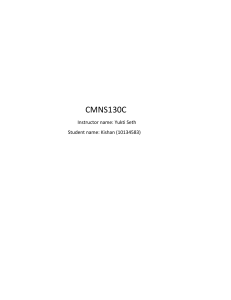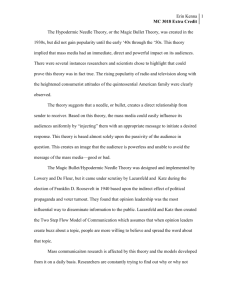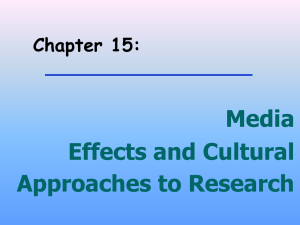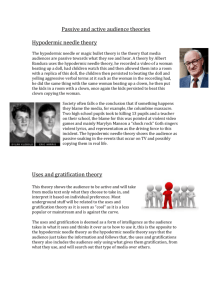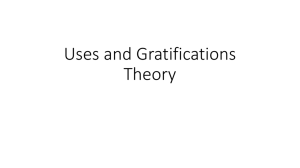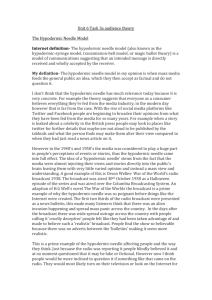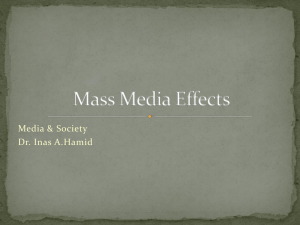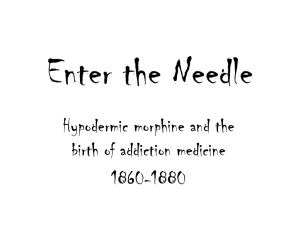File - jordans media
advertisement
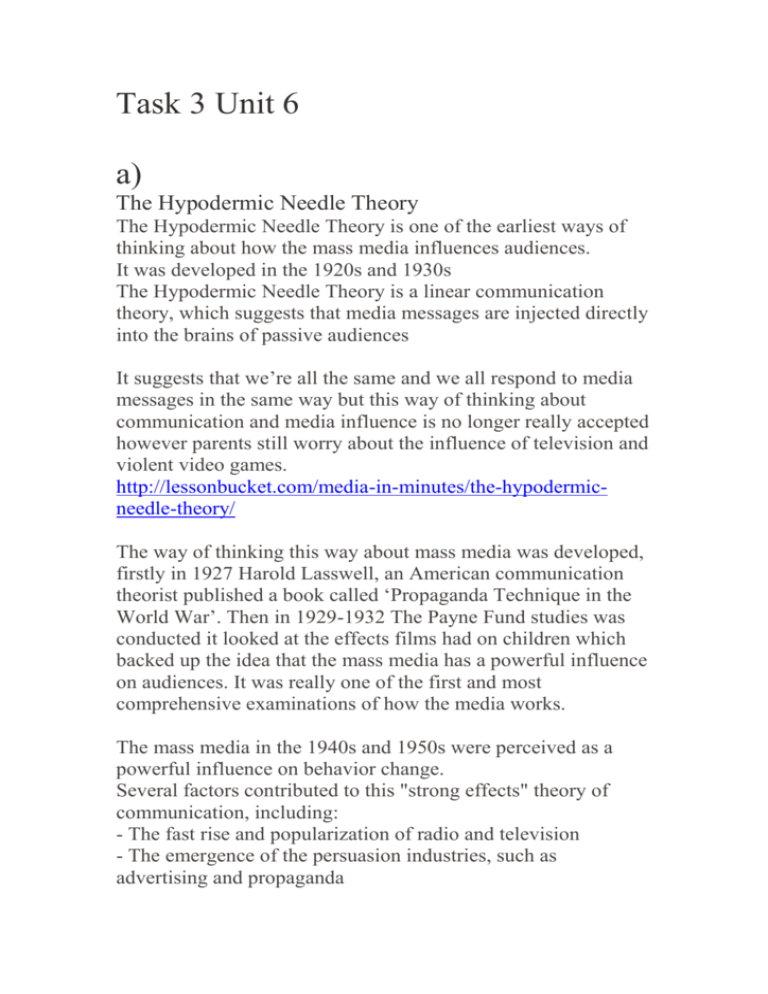
Task 3 Unit 6 a) The Hypodermic Needle Theory The Hypodermic Needle Theory is one of the earliest ways of thinking about how the mass media influences audiences. It was developed in the 1920s and 1930s The Hypodermic Needle Theory is a linear communication theory, which suggests that media messages are injected directly into the brains of passive audiences It suggests that we’re all the same and we all respond to media messages in the same way but this way of thinking about communication and media influence is no longer really accepted however parents still worry about the influence of television and violent video games. http://lessonbucket.com/media-in-minutes/the-hypodermicneedle-theory/ The way of thinking this way about mass media was developed, firstly in 1927 Harold Lasswell, an American communication theorist published a book called ‘Propaganda Technique in the World War’. Then in 1929-1932 The Payne Fund studies was conducted it looked at the effects films had on children which backed up the idea that the mass media has a powerful influence on audiences. It was really one of the first and most comprehensive examinations of how the media works. The mass media in the 1940s and 1950s were perceived as a powerful influence on behavior change. Several factors contributed to this "strong effects" theory of communication, including: - The fast rise and popularization of radio and television - The emergence of the persuasion industries, such as advertising and propaganda - The Payne Fund studies of the 1930s, which focused on the impact of motion pictures on children, and - Hitler's monopolization of the mass media during WWII to unify the German public behind the Nazi party http://www.utwente.nl/cw/theorieenoverzicht/Theory%20Cluste rs/Mass%20Media/Hypodermic_Needle_Theory/ Uses and Gratifications This theory is essentially the opposite of the Hypodermic needle model. The main idea is that media does not fully control a helpless audience but rather the media is subjective per person as they use it to meet needs. The uses and gratifications theory of audiences suggests that the audience determines what to do with the media rather than the media simply influencing the audience directly which is very unlike the Hypodermic Needle Theory. The idea of this is that the media is not being forced onto them; they have their own freedom to interpret the message for themselves. This theory has been criticised because it suggests that media producers hold no responsibility for the effect it has on someone it depends on the audience instead of having a specific message o interpretation. Reception Theory investigates how individuals react to media material, and how each person, such as books and films, interprets it. Depending on the content, and the way that is is shown, each person can take the material and interpret in many different ways, because of their upbringing, cultural background or even their education. Passive or Active Consumption An active consumption is when the audience will engage and discuss media messages that comes across to them and some times question the media messages through life experiences. A passive consumption is when the audience doesn’t engage or question the media message but just accepts it, this media outlets want to achieve when making a film or show, as they want to view to except and not question. 4) Audience Responses Preferred – is where the person watching understands the messaes and agrees. For example if there is an advert for nike saying it’s the best sport brand in the world, the person will agree. Oppositional – is where the reader understands the preferred reading but chooses to reject and has his or her own view. For example if an advert suggests that cycling is too dangerous on the roads someone may use their own view and disagree because they have a passion for cycling Negotiated – negotiated reading is where the watcher accepts the preferred reading but may modify it so that it reflects their own interests and experiences. Participatory – is where the audience interacts and participates with the media they are consuming. E.g. the encouragement to get involved with TV debates and news stories, and game shows. Social media has encouraged this by making it easier to get involved with.
